By: Dr. Elizabeth Eggert
How did this start?
Julie came to us in February of 2016 hoping to replace the bridge that was placed when she was in the 10th grade because it no longer matched her other anterior teeth. She was interested in improving the look of her smile, but it was very important to her to make sure her teeth had a natural appearance. Julie had heard our team was experienced in cosmetic dentistry and was interested in what we could do for her!
What did Julie want?
Julie wanted to start her transformation by achieving a brighter smile with the Philips 2 week at-home system. Her goal was to get a natural-looking white and more consistent coloring in her front teeth. After the whitening, she was interested in getting more even length and spacing in her upper front teeth with veneers and a new bridge.
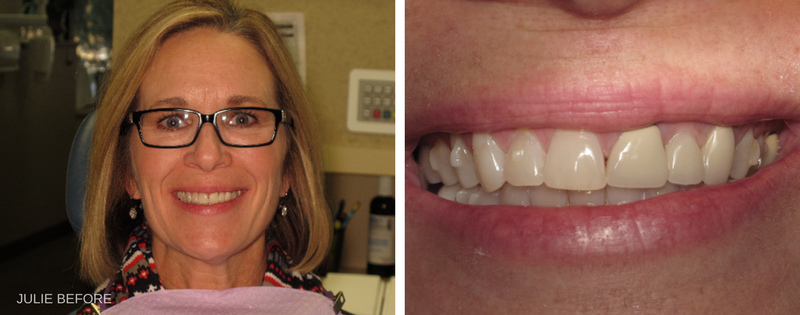
What was involved?
We started out by taking records to get a better picture of what treatment would be required to reach Julie’s goals. Dr. Michael Furey recommended Julie start with Invisalign to allow for the most even looking smile and then placing veneers on 3 front teeth as well as a new bridge for the other 3 front teeth. Julie received her first set of Invisalign trays in June of 2016. She was great about following the Invisalign treatment plan and schedule, and was able to complete the treatment in 7 months. Julie then met with Dr. Elizabeth to create a plan to place the veneers and bridge. It turned out Julie needed the help of Dr. Alejandro Aguirre to retreat a root canal on her traumatized tooth. After that was completed, Dr. Elizabeth completed the procedures needed for her new teeth.
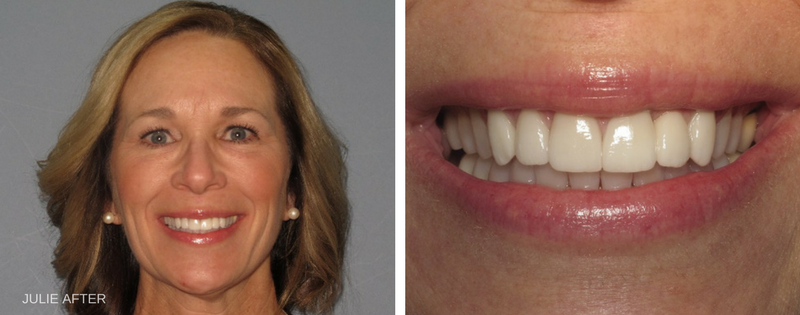
What does she think?
Julie felt some anxiety and skepticism at first, but knew the work needed to be done to create the look and function she desired. She felt much more confident after meeting with the doctors and team. Julie said, “I’m so glad I did it! You all have helped me get through it! I catch myself in the mirror looking at how great they look. I’m very happy!” Julie has even motivated her sister to go through similar treatment and says she encourages anyone to go forward with it. We are so happy to have worked with Julie. She came to us as a “cosmetic” patient and she now sees us for her recare and maintenance as well. It means the world to us that Julie has placed her trust in us!
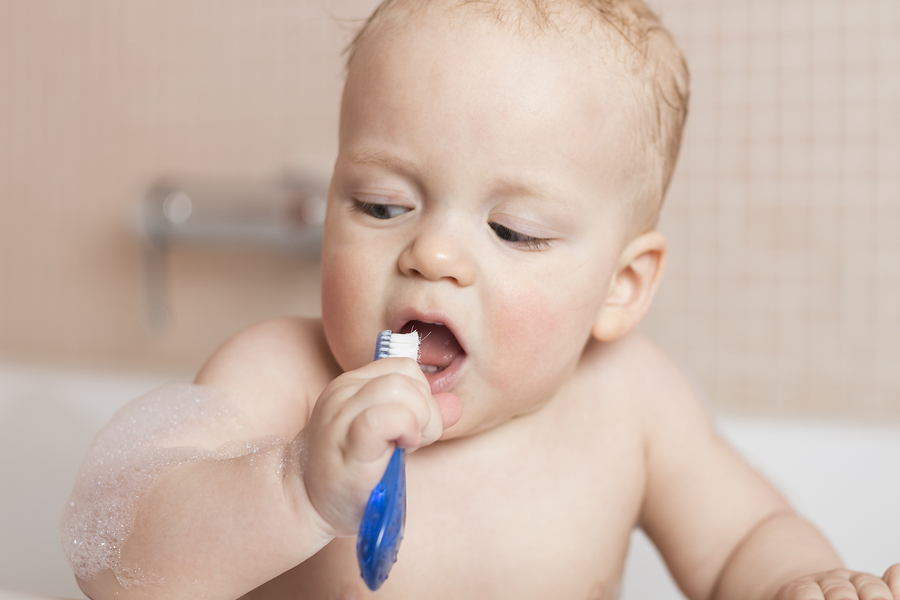
 Teething is a natural process that occurs through age 2-3, when most baby teeth have been pushed through your child’s gums. Erupting teeth can cause discomfort or even pain for your child. If your little one is drooling more than usual, has swollen gums, or a higher than normal temperature, chances are he or she is teething. Alleviate the pain with a cold washcloth or teething ring. Rubbing their gums with a clean finger can also provide relief.
Teething is a natural process that occurs through age 2-3, when most baby teeth have been pushed through your child’s gums. Erupting teeth can cause discomfort or even pain for your child. If your little one is drooling more than usual, has swollen gums, or a higher than normal temperature, chances are he or she is teething. Alleviate the pain with a cold washcloth or teething ring. Rubbing their gums with a clean finger can also provide relief.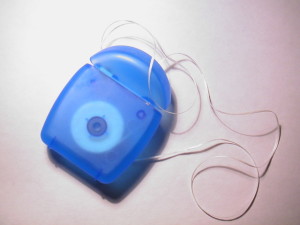 Flossing guilt. The phenomenon is real. We know flossing is important for maintaining dental health yet many of us don’t incorporate it into our daily routine. Worse yet? At regular dental checkups, according to the American Association of Periodontology, up to 25% of us stretch the truth about our flossing frequency. (As if it isn’t evident by our swollen gums from our hasty, pre-visit floss!) Let’s cut out the excuses and commit to investing daily in our dental health by taking a look at guidelines for an easy and effective floss and addressing some common questions.
Flossing guilt. The phenomenon is real. We know flossing is important for maintaining dental health yet many of us don’t incorporate it into our daily routine. Worse yet? At regular dental checkups, according to the American Association of Periodontology, up to 25% of us stretch the truth about our flossing frequency. (As if it isn’t evident by our swollen gums from our hasty, pre-visit floss!) Let’s cut out the excuses and commit to investing daily in our dental health by taking a look at guidelines for an easy and effective floss and addressing some common questions.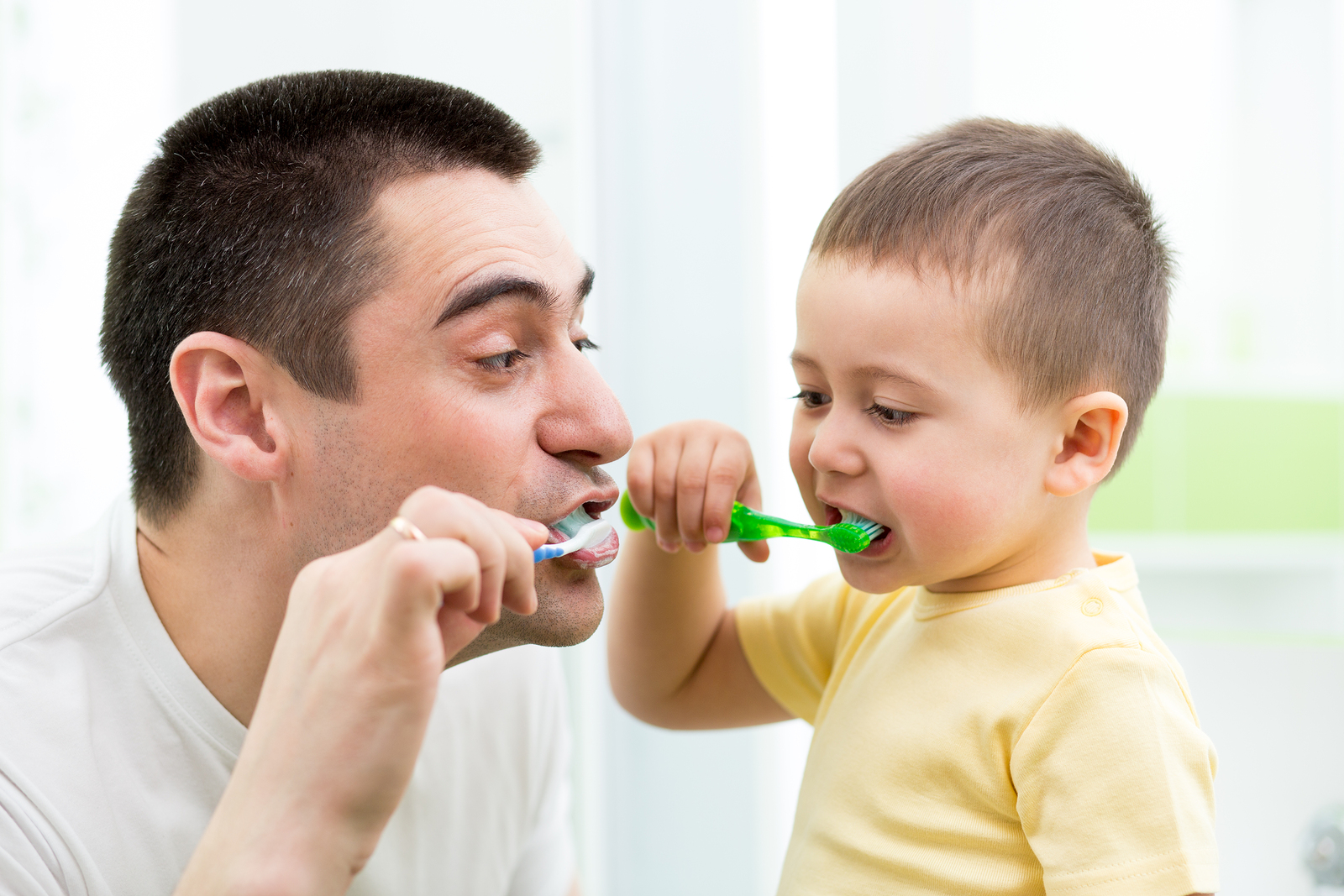 Gingivitis – inflammation of the gums – is no laughing matter. Typically caused by a bacterial infection, gingivitis is all-too-common and if left untreated can result in periodontitis and tooth loss and increase the risk of diabetes, heart disease, stroke and lung disease. Fortunately, proper care goes a long way in keeping away this unwanted guest. Here’s everything you need to know to identify, treat and ultimately prevent gingivitis.
Gingivitis – inflammation of the gums – is no laughing matter. Typically caused by a bacterial infection, gingivitis is all-too-common and if left untreated can result in periodontitis and tooth loss and increase the risk of diabetes, heart disease, stroke and lung disease. Fortunately, proper care goes a long way in keeping away this unwanted guest. Here’s everything you need to know to identify, treat and ultimately prevent gingivitis. Dr. Jeff and Dr. Elizabeth Eggert or one of our wonderful hygienists will measure the depth of any pockets around your teeth with a small ruler. This is a good way to check for inflammation of the gums. A healthy depth is 1-3mm. We will also examine your dental x-rays to look for evidence of bone loss.
Dr. Jeff and Dr. Elizabeth Eggert or one of our wonderful hygienists will measure the depth of any pockets around your teeth with a small ruler. This is a good way to check for inflammation of the gums. A healthy depth is 1-3mm. We will also examine your dental x-rays to look for evidence of bone loss.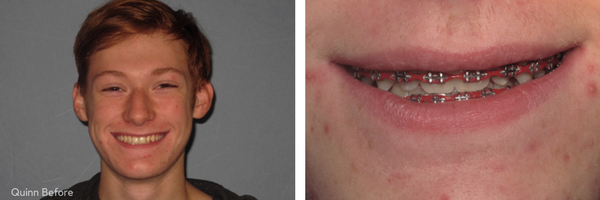
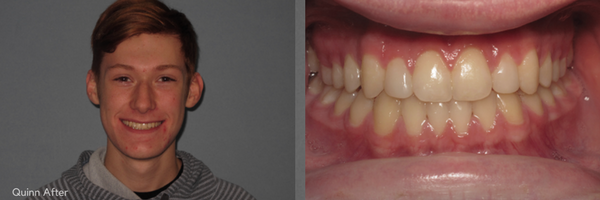
 How Oral Health and Heart Disease Are Connected
How Oral Health and Heart Disease Are Connected We have received a number of emails, calls and questions from patients about
We have received a number of emails, calls and questions from patients about 


 Regular flossing removes the plaque that builds up between your teeth and along the gum line. If you’re not flossing regularly, plaque will build up in these areas. It doesn’t take long before the plaque causes inflammation along your gum line.
Regular flossing removes the plaque that builds up between your teeth and along the gum line. If you’re not flossing regularly, plaque will build up in these areas. It doesn’t take long before the plaque causes inflammation along your gum line.